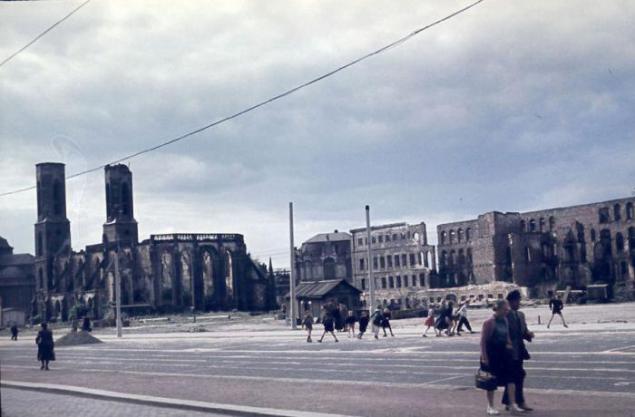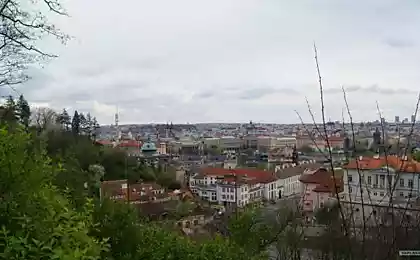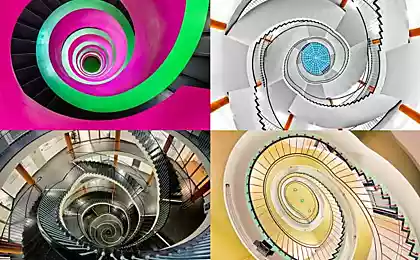1000
The post-war revival of the ruins of Dresden (22 photos)
As we all know, in February 1945, Anglo-American aviation has massive bombing of Dresden, a major cultural center, the former capital of the Electorate of Saxony, "Florence on the Elbe". As a result, the historical center, the old town, was turned into a heap of ruins. In 1950-ies. the ruins were dismantled, except for a few skeletons of historic buildings. They stand for in canned form throughout the GDR era.
As a monument to the war it was decided to leave the ruins of the most beautiful churches in the city - the Frauenkirche.
These were in 1957 .:

Only at the very end of the 20th century man-made miracle begins recreating the historical center of Dresden, the largest restoration project in Europe since the rebirth of Warsaw and Gdansk.
The real miracle of architecture, like a huge stone bell, the Frauenkirche church was built in the Baroque style on the orders of the Elector of Saxony and King of Poland Augustus the Strong in the 1726-1743 biennium.
So she looked in the late 19th century:

Entire generations drezdentsev remember it completely different.
Frauenkirche in 1967 .:

That was kind of the center of Dresden in 1957 .:

On the left we see the ruins of the Dresden castle-residence.
Another view from 1957 .:

Gradually, the site of the former Old Town filled buildings. Former New Market Square (Neumarkt) around the ruins of the Frauenkirche remained undeveloped. Species in 1960, Mr. .:

One of the surviving churches near the castle (I forgot her name), 1960 .:

Panorama of the historic center Drezdana in 1960:

Dresden Castle Status differed little from state Konigsberg Royal Castle in the early postwar years. But Dresden mothballed time and did not let take away a brick, especially, did not blow up the remains.
Castle residence and the palace Taschenberg in 1967:

View of the castle in 1969 .:

Building a modern Palace of Culture in the heart of Dresden's Old Town, 1967 .:

Presidential Palace in 1980. Mr. .:

Panorama of the historic center of Dresden in 1980 .:

The ruins of the Frauenkirche in 1980:

1982 .:

Not that the GDR authorities were opposed to the restoration of historical sites, some pearls of Dresden are very well restored: The Zwinger Palace and the Opera House, for example. However, further work on the revival of the Old Town is clearly not part of their immediate plans.
Everything changed in 1989. Drezdentsy have decided that they want to return the Saxon capital of its former beauty and grandeur of that at all costs. What was to rebuild the long-defunct Old Town, they are not bothered. And what will be rebuilt again and falshak solid remake. They did not embarrass poor economic situation of East Germany after reunification that the huge amounts of money could have spent on the solution of social problems. It is unlikely that they then thought that embedded costs a hundred times and then pay off the vast flow of tourists. No, they just wanted to get my city in all its glory and be proud of it. For them it was the same important spiritual task for the restoration of the medieval Poles in Warsaw after the war.
About what a lot of work was ahead, said at least the fact: the restoration of the castle began in the early '90s, and it has to end in 2013, that is, only one object in the Old City took more than 20 years!
In the yard in 1990:

The slow recovery was due not only to financial difficulties, but the technology itself, which was aimed at the restoration of the historic monument is true with the most authentic, and not the creation of his plaster cast concrete.
Here I must say that after the war the ruins of palaces, churches, historical buildings of Dresden were carefully dismantled, all the fragments are described and taken out of town. Almost half a century they have been waiting in the wings before it is not "a time to gather stones" and then each surviving brick stood in its place.
The symbol of the entire campaign was the replacement recreation Frauenkirche, without which the classic silhouette of the city was simply not conceivable. The money for it was collected nationally:
In 1990 he began the analysis of the mound of debris of the temple and the archaeological work.
1991:

April 1993 r .:

In 1996 he began to reconstruct itself. All the stones of the old buildings, which were able to find and identify, put into place. They are easy to spot in the walls of the restored temple is subdivided old stones have a darker tone:

In view of the use of two large pieces of the old walls, restoration of monuments do not dare call remakes or hoax.
Restoration of the church was completed in 2005. Immediately after that, began the reconstruction of entire neighborhoods surrounding historic buildings, with this to be in the way demolished building GDRovskie.
However, if the recovery of the Castle, the residence and the Frauenkirche was a meticulous work in compliance with the maximum historical authenticity, the background building originally planned as a stylized antique replica, not trying to create the illusion of antiquity and authenticity. Although almost all the houses are designed according to old photographs and paintings, they are, nevertheless, has deliberately embedding cutting-edge architecture, including the infamous Decon. As a result, recreated buildings creates the necessary background for the authentic historical monument, creates a cozy atmosphere of the old town, but it is not misleading, recalling at every turn, it's not real old, but only emulation irretrievably lost.
Based on this concept of light and there are wonderful resurrection of the old city of Dresden.
Such was the Neumarkt square after reconstitution of the historical ensemble:

Day view:

We have before us once again one of the best European urban silhouette:

They will work more years, restoring the old town house by house, block by block. To restore what was destroyed in a few hours.
As a monument to the war it was decided to leave the ruins of the most beautiful churches in the city - the Frauenkirche.
These were in 1957 .:

Only at the very end of the 20th century man-made miracle begins recreating the historical center of Dresden, the largest restoration project in Europe since the rebirth of Warsaw and Gdansk.
The real miracle of architecture, like a huge stone bell, the Frauenkirche church was built in the Baroque style on the orders of the Elector of Saxony and King of Poland Augustus the Strong in the 1726-1743 biennium.
So she looked in the late 19th century:

Entire generations drezdentsev remember it completely different.
Frauenkirche in 1967 .:

That was kind of the center of Dresden in 1957 .:

On the left we see the ruins of the Dresden castle-residence.
Another view from 1957 .:

Gradually, the site of the former Old Town filled buildings. Former New Market Square (Neumarkt) around the ruins of the Frauenkirche remained undeveloped. Species in 1960, Mr. .:

One of the surviving churches near the castle (I forgot her name), 1960 .:

Panorama of the historic center Drezdana in 1960:

Dresden Castle Status differed little from state Konigsberg Royal Castle in the early postwar years. But Dresden mothballed time and did not let take away a brick, especially, did not blow up the remains.
Castle residence and the palace Taschenberg in 1967:

View of the castle in 1969 .:

Building a modern Palace of Culture in the heart of Dresden's Old Town, 1967 .:

Presidential Palace in 1980. Mr. .:

Panorama of the historic center of Dresden in 1980 .:

The ruins of the Frauenkirche in 1980:

1982 .:

Not that the GDR authorities were opposed to the restoration of historical sites, some pearls of Dresden are very well restored: The Zwinger Palace and the Opera House, for example. However, further work on the revival of the Old Town is clearly not part of their immediate plans.
Everything changed in 1989. Drezdentsy have decided that they want to return the Saxon capital of its former beauty and grandeur of that at all costs. What was to rebuild the long-defunct Old Town, they are not bothered. And what will be rebuilt again and falshak solid remake. They did not embarrass poor economic situation of East Germany after reunification that the huge amounts of money could have spent on the solution of social problems. It is unlikely that they then thought that embedded costs a hundred times and then pay off the vast flow of tourists. No, they just wanted to get my city in all its glory and be proud of it. For them it was the same important spiritual task for the restoration of the medieval Poles in Warsaw after the war.
About what a lot of work was ahead, said at least the fact: the restoration of the castle began in the early '90s, and it has to end in 2013, that is, only one object in the Old City took more than 20 years!
In the yard in 1990:

The slow recovery was due not only to financial difficulties, but the technology itself, which was aimed at the restoration of the historic monument is true with the most authentic, and not the creation of his plaster cast concrete.
Here I must say that after the war the ruins of palaces, churches, historical buildings of Dresden were carefully dismantled, all the fragments are described and taken out of town. Almost half a century they have been waiting in the wings before it is not "a time to gather stones" and then each surviving brick stood in its place.
The symbol of the entire campaign was the replacement recreation Frauenkirche, without which the classic silhouette of the city was simply not conceivable. The money for it was collected nationally:
In 1990 he began the analysis of the mound of debris of the temple and the archaeological work.
1991:

April 1993 r .:

In 1996 he began to reconstruct itself. All the stones of the old buildings, which were able to find and identify, put into place. They are easy to spot in the walls of the restored temple is subdivided old stones have a darker tone:

In view of the use of two large pieces of the old walls, restoration of monuments do not dare call remakes or hoax.
Restoration of the church was completed in 2005. Immediately after that, began the reconstruction of entire neighborhoods surrounding historic buildings, with this to be in the way demolished building GDRovskie.
However, if the recovery of the Castle, the residence and the Frauenkirche was a meticulous work in compliance with the maximum historical authenticity, the background building originally planned as a stylized antique replica, not trying to create the illusion of antiquity and authenticity. Although almost all the houses are designed according to old photographs and paintings, they are, nevertheless, has deliberately embedding cutting-edge architecture, including the infamous Decon. As a result, recreated buildings creates the necessary background for the authentic historical monument, creates a cozy atmosphere of the old town, but it is not misleading, recalling at every turn, it's not real old, but only emulation irretrievably lost.
Based on this concept of light and there are wonderful resurrection of the old city of Dresden.
Such was the Neumarkt square after reconstitution of the historical ensemble:

Day view:

We have before us once again one of the best European urban silhouette:

They will work more years, restoring the old town house by house, block by block. To restore what was destroyed in a few hours.























